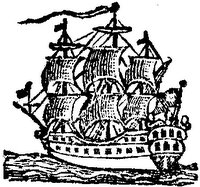Miss Quincy, Mrs. Lincoln, Mrs. Storer, and the Adamses
At the time, Lincoln was twenty-five years old and had been married a little over a year. She apparently set out to mentor the teen-aged girl in finding a beau.
On 5 October, Abigail wrote back (in a version probably regularized in spelling and punctuation before being published in 1840):
You bid me tell one of my sparks (I think that was the word) to bring me to see you. Why! I believe you think they are as plenty as herrings, when, alas! there is as great a scarcity of them as there is of justice, honesty, prudence, and many other virtues. I’ve no pretensions to one.Back in 1759, a young lawyer named John Adams had accompanied his friend Richard Cranch on a visit to the Smith household. Cranch would eventually marry the oldest daughter, Mary. But Adams had come away unimpressed by the Smith girls—“Not fond, not frank, not candid.” In his eyes then, they didn’t compare to “H.Q.,” whom he thought “Tender and fond. Loving and compassionate.”
As I quoted back here, Adams came close to proposing to Hannah Quincy, but didn’t. Which of course meant that she may have had no idea how interested he was. She married Dr. Bela Lincoln instead.
On 30 Dec 1761, a little less than two months after Abigail had told Mrs. Lincoln she had no beaus, John Adams wrote with Cranch to her older sister to say, “our good Wishes are pour’d forth for the felicity of you, your family and Neighbours.—My—I dont know what—to Mrs. Nabby.” He was trying to flirt. Within three years, John Adams and Abigail Smith were married.
Both the Adamses remained friendly with Hannah Lincoln—she was, after all, a cousin of Abigail’s; a sister of John’s legal colleagues Samuel and Josiah Quincy, Jr.; and a neighbor back in Braintree after the death of her first husband.
In October 1777 Abigail was pleased to report to John that “our Friend Mrs. L——n of this Town” was engaged “to Deacon S——r of Boston, an exceeding good match and much approved of.” Everybody liked and respected Ebenezer Storer.
As Abigail Adams traveled away from Massachusetts in the 1780s and 1790s, Hannah Storer continued to correspond with her on topics like social events, children, and fashions. Her political comments were general, though she expressed indignation at John Adams being turned out of the Presidency.
Ebenezer Storer died in 1807. Abigail Adams died in 1818. Their widowed spouses lived on in Boston and Braintree, evidently not seeing each other regularly if at all.
Josiah Quincy, Jr. (1802-1882), Hannah Storer’s great-nephew, wrote in his memoir Figures of the Past about bringing them together sometime in the 1820s:
Among my boyish recollections [of Braintree] there is distinctly visible a very pretty hill, which rose from the banks of the river, or what passed for one, and was covered with trees of the original forest growth. This was known as Cupid’s Grove; and it had been known under that title for at least three generations, and perhaps from the settlement of the town. The name suggests the purposes to which this sylvan spot was dedicated. It was the resort of the lovers of the vicinage, or of those who, if circumstances favored, might become so. The trunks of the trees were cut and scarred all over with the initials of ladies who were fair and beloved. . . .Mrs. Storer could still flirt. And President Adams, he was still trying.
I, a young man, just entering life, was deputed to attend my venerable relative on a visit to the equally venerable ex-President. Both parties were verging upon their ninetieth year. They had met very infrequently, if at all, since the days of their early intimacy.
When Mrs. Storer entered the room, the old gentleman’s face lighted up, as he exclaimed, with ardor, “What! Madam, shall we not go walk in Cupid’s Grove together?”
To say the truth, the lady seemed somewhat embarrassed by this utterly unlooked-for salutation. It seemed to hurry her back through the past with such rapidity as fairly to take away her breath. But self-possession came at last, and with it a suspicion of girlish archness, as she replied, “Ah, sir, it would not be the first time that we have walked there!”


